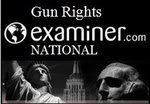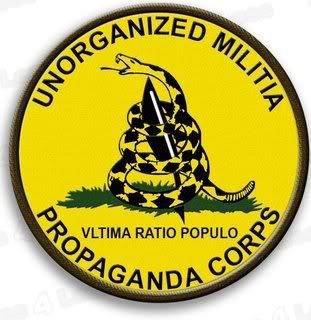In 1986, Congress passed (and President Reagan signed) a bill, the Firearm Owners' Protection Act, which revised the Gun Control Act of 1968, in order to protect the rights of gun owners and licensed dealers. FOPA goes a long way toward accomplishing that goal, but in one respect, constitutes an attack on gun rights, rather than an affirmation of them. This attack comes in the form of an amendment attached to FOPA, making illegal the civilian ownership of fully automatic weapons manufactured after May 19, 1986, in addition to the already onerous requirements for civilian acquisition of fully automatic weapons, as required by the National Firearms Act of 1934.
The story of how this amendment came to be added to FOPA, despite the fact that its effects run directly counter to the clear intent of the rest of the act, is worthy of a closer look. The amendment was introduced by William Hughes, then a Democrat representative of New Jersey in the U.S. House of Representatives. Hughes had a long history of hostility toward gun rights in general, and FOPA in particular. He was apparently well aware that the amendment would likely be voted down in the presence of the entire House membership, so he brought it up for a vote late at night, after most of the representatives had left for the evening. Additionally, the vote was by voice, instead of by roll call. This turns out to have been important, because there is a widely held suspicion that the "Nay" votes actually outnumbered the "Yea" votes, but with Hughes' ally, Representative Charles Rangel (D-NY) presiding over the proceedings, the amendment was declared to have been approved, and with no roll call vote, that declaration was not subject to dispute.
The problems with the Hughes Amendment go beyond the allegations of perfidious conduct to facilitate its approval, though. Another problem is the need for such a measure, or more acccurately, the lack of such a need. The requirements imposed by the NFA for the acquisition and possession of fully automatic firearms are so strict that many people believe that private citizens are banned outright from owning them, and this was the case even before FOPA and the Hughes Amendment. It should be kept in mind that many states have in place yet more restrictions on these firearms, including, in many cases, outright bans. If one is of a mind to assume that the Hughes Amendment was a response to an epidemic of "machine gun violence," one should guess again, as is illustrated by these figures:
. . . in Targeting Guns, [Gary] Kleck writes, four police officers were killed in the line of duty by machine guns from 1983 to 1992. (713 law enforcement officers were killed during that period, 651 with guns.)(source) If one were to look at crimes involving only fully automatic weapons owned legally within the framework of the NFA, the numbers become even more telling. With more than 100,000 fully automatic weapons legally in private hands, a grand total of two have been used in crimes (both, incidentally, after passage of FOPA and the Hughes Amendment). (Same source as above) Clearly, the Hughes Amendment is a "solution" to a problem that does not exist.
In 1980, when Miami's homicide rate was at an all-time high, less than 1% of all homicides involved machine guns. (Miami was supposedly a "machine gun Mecca" and drug trafficking capital of the U.S.) Although there are no national figures to compare to, machine gun deaths were probably lower elsewhere. Kleck cites several examples:
Of 2,200 guns recovered by Minneapolis police (1987-1989), not one was fully automatic.
A total of 420 weapons, including 375 guns, were seized during drug warrant executions and arrests by the Metropolitan Area Narcotics Squad (Will and Grundie counties in the Chicago metropolitan area, 1980-1989). None of the guns was a machine gun.
The most compelling objection to the Hughes Amendment being used to ban private ownership of machine guns built after 1986 might be that the language of the amendment doesn't actually do that. To illustrate that point, we must look at the relevant part of the amendment itself:
(1) Except as provided in paragraph (2), it shall be unlawful for any person to transfer or possess a machinegun.The way this has been interpreted is that this bans possession of fully automatic weapons unless A) the weapons are possessed by a government agency (military, law enforcement, etc,), or B) the firearm was already in private possession before May 19, 1986. However, the actual wording of part (A) is "...possession by or under the authority of the United States...". It would seem difficult to argue that a machine gun for which there is a tax stamp, signed by the Secretary of the Treasury, is not "under the authority" of the U.S. government, and nowhere else is there any indication that such a tax stamp cannot be issued. Still, the ATF holds to the interpretation that private citizens cannot possess these firearms, almost without challenge.
(2) This subsection does not apply with respect to--
(A) a transfer to or by, or possession by or under the authority of, the United States or any department or agency thereof or a State, or a department, agency, or political subdivision thereof; or
(B) any lawful transfer or lawful possession of a machinegun that was lawfully possessed before the date this subsection (p.670)takes effect.
The Attorney General could easily correct this situation, but I wouldn't hold my breath while Alberto Gonzales holds the office.

 Stumble it!
Stumble it!





0 comments:
Post a Comment